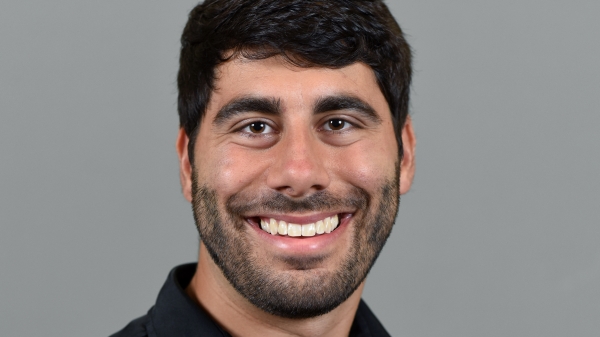Memories of home: ASU research shows how species can readapt to ancestral environments
Genes are more than blueprints for building organisms; they are also vessels of memory

Phenotypic plasticity, along with random mutations introduced into a population, are what drive adaptation to novel environments. But what happens when a species adapts to an environment it has already inhabited thousands of years ago?
Genes are more than blueprints for building organisms. They are also vessels of memory. In new research published in Science Advances, Wei-Chin Ho, a researcher in Arizona State University's Biodesign Center for Mechanisms of Evolution, and his colleagues describe how species can readapt to ancestral environments.
Phenotypic plasticity is the phenomenon in which one set of genes can code for the expression of various traits. Only one trait is expressed at a time depending on the environment, but if the environment changes, that trait may change as well. This alteration can range anywhere from a change in coloring to a change in diet, and oftentimes the change can confer an increase in fitness.
This plasticity, along with random mutations introduced into a population, are what drive adaptation to novel environments. But what happens when a species adapts to an environment it has already inhabited thousands of years ago?
In previous research, plastic changes were observed in species as they are exposed to new environments; however, researchers have yet to study what happens when species are reexposed to environments they once inhabited, or “ancestral environments.”
“Researchers seldom discuss in what situations the role of phenotypic plasticity can be different,” Ho said. “One interesting factor is the organism's past history of adaptation.”
In this study, this concept of readaptation was put to the test in chickens. About 1,200 years ago, domesticated chickens were brought to the Tibetan plateau from the lowlands of Southeast Asia. They adapted to this high-altitude environment over time, acquiring a greater number of red blood cells and a higher rate of efficiency in distributing oxygen to the body. To determine the role plasticity plays in the chickens’ ability to adapt, researchers transplanted highland chickens to lowland environments and vice versa.
“We have a setup of ‘reciprocal common gardens,’ in which we measured the transcriptome of lowland and highland chickens in both lowland and highland labs," Ho said. "Therefore, we are able to look at all the plastic responses during the readaptation.”
The researchers found that it took fewer phenotypic changes for the chickens to readjust to their habitat in the lowlands than it was for chickens in the lowlands to adjust to the novel high-altitude environment of the highlands. This suggests that the chickens have some form of genetic memory of their ancestral environment, and that their past adaptations dictate their future evolution.
“This research points out how the role of plastic changes can be different based on how ‘familiar’ the organisms are with an environment,” Ho said. “Specifically, if the organisms are reexposed to the environments they have already inhabited (as they are when they readapt to ancestral environments), then after the plastic changes, the status of gene expression are more likely to be brought back to the preferred status at the ancestral environment.”
In the paper, the researchers also compiled similar studies conducted on E. coli and guppies. Parallel conclusions were drawn from these studies, suggesting that this phenomenon is not species-specific.
In the future, the researchers plan to take a deeper look into how this trend translates into differences in adaptation.
“I hope to keep studying the role of phenotypic plasticity in different environments with respect to an organism's evolutionary history. For example, how long and how strong does ancestral adaptation have to be for this kind of phenomena,” Ho said.
More Science and technology

ASU researchers develop special microphone to verify human speech
Deepfakes have become a large societal concern with the advent of video and audio content generated by artificial intelligence,…

Leading students toward a future of renewable energy
Nicholas Rolston, assistant professor in the School of Electrical, Computer and Energy Engineering, one of the Ira A. Fulton…

SPARCS mission spacecraft bus delivered to ASU for final assembly
The Arizona State University team that is building the NASA-funded Star-Planet Activity Research CubeSat, or SPARCS, cleared a…